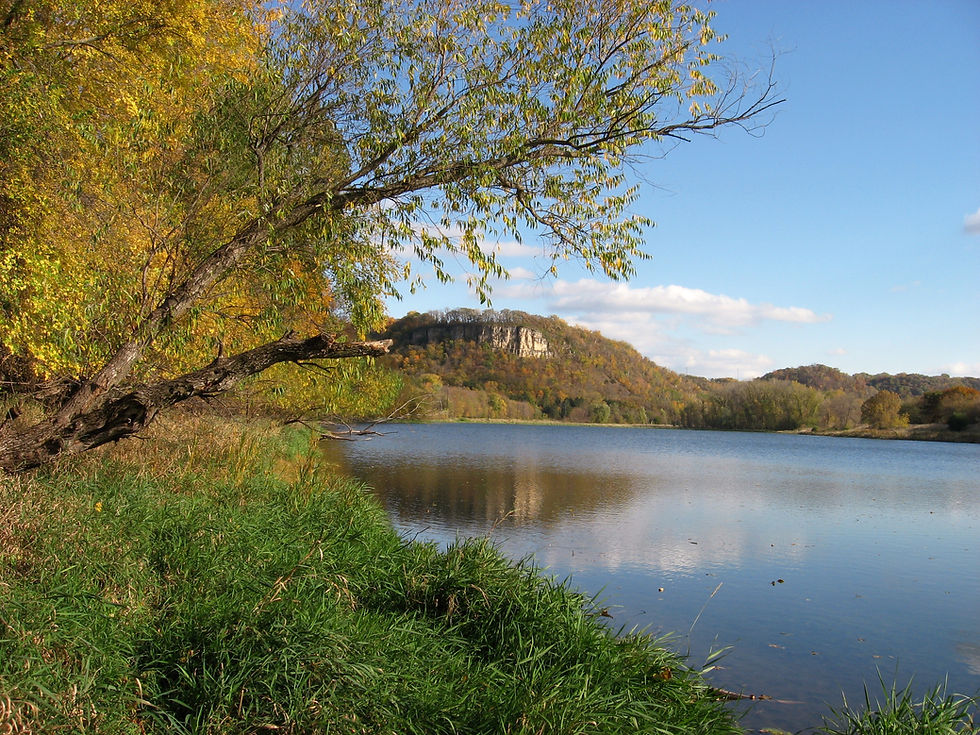Crustwalking
- wacoutanaturenotes
- Mar 17, 2020
- 3 min read

Snow Moon
The Native American name for the February full moon is the "Snow Moon." This year that occurred on February 9th.

Wacouta Pond Looking South
The Ojibway name for crustwalking is Onabani-gisiss. The full moon on March 9th was known as the "Moon Of The Crust Of The Snow." I have always felt that the most enjoyable time of the winter to travel through the floodplain forests early in the morning is in March.
These ideal conditions are a result of warm spells which melt and settle the snow. With cold freezing nights, snow sets up into a hard surface crust allowing a person to travel where they wish without much effort. My favorite mode of travel is on cross country skis.
Years ago on my ELC March winter camping expeditions into the BWCA, the best time to travel from lake to lake was early in the mornings. By late morning, the snow would get soft making travel very challenging. It would be at this point we would make our next camp, have lunch and get out the ice fishing equipment.

Wacouta Pond Eagle Nest
Extra bonuses for crustwalking or skiing are no trails to follow, no brush to fight through and obviously no mosquitoes to swat. My main objective early in the morning of February 26th was to check out the large eagle nest on the east end of Wacouta Pond for occupancy.
With eagles nesting here, the odds of a successful nesting for peregrine falcons on the face of nearby Rattlesnake Bluff would be greatly reduced. In recent years, the young falcon nestlings have been killed by eagles or great horned owls before they were able to fledge.
If you look closely near the top of the nest, a white head can be observed indicating an adult eagle incubating eggs.

Sap Icicle
This spring the weather has been nearly perfect for maple syrup enthusiasts. Just for interest, I place one tap in our front yard maple tree to follow the progress and collect enough sap to drink and make maple baked beans. With freezing nights and day temps in the 40's the trees have run nearly every day the first two weeks of March. On a ski outing early in March, I observed several sap icicles hanging from injured soft maple trees.

Mouth of Bullard's Creek
On February 28th with the river level at a more normal winter level of 3.98 feet, I decided to travel on Wacouta Bay and the surrounding floodplain forest. In addition to discovering the remains of an immature bald eagle underneath a large nest and considerable otter sign, I observed something quite remarkable. In recent years, Wacouta Bay has filled in so drastically that the open water at the mouth of Bullard's Creek extended halfway across the bay. I am quite certain at this water level, there isn't more that a couple feet of water in most of the bay!

Adult Cooper's Hawk
Cooper's hawks are primarily forest and woodland birds depending on other birds as a main source of food. They prefer medium sized birds such as mourning doves, starlings and pigeons instead of small birds as prey. We saw evidence of this as we were eating our noon lunch on February 27th. This adult Cooper's hawk was unsuccessful in its attempt to catch a small chickadee. In ended up landing on the ground underneath our window.

Wacouta Pond from Bluff
Last year when Wacouta Pond exhibited extremely high water levels, I was frequently asked if the pond had an inlet?
Actually there is some higher ground across Highway 61 from Mount Frontenac. Any water east of that high spot flows into Pleasant Valley Creek and eventually Frontenac Pond.
Water west of that high location flows toward Wacouta and empties into the pond. This photo taken on March 15th from the top of the bluff reveals the incoming water melting the ice. At the present time, it appears water levels on the pond will be much lower than 2019.




Maybe with lower water in the pond the Canada goose families won't be directing traffic on Wacouta Road as much?
So good to read your observations and recollection s thank you Bruce!
Yet another great blog! We look forward to your adventures and observations each month. Have you seen an alpen glow on the bluffs this winter? We've been watching but have not seen one.
Thanks for sharing your knowledge and photos, Bruce!
Awesome as always. Thanks Bruce!